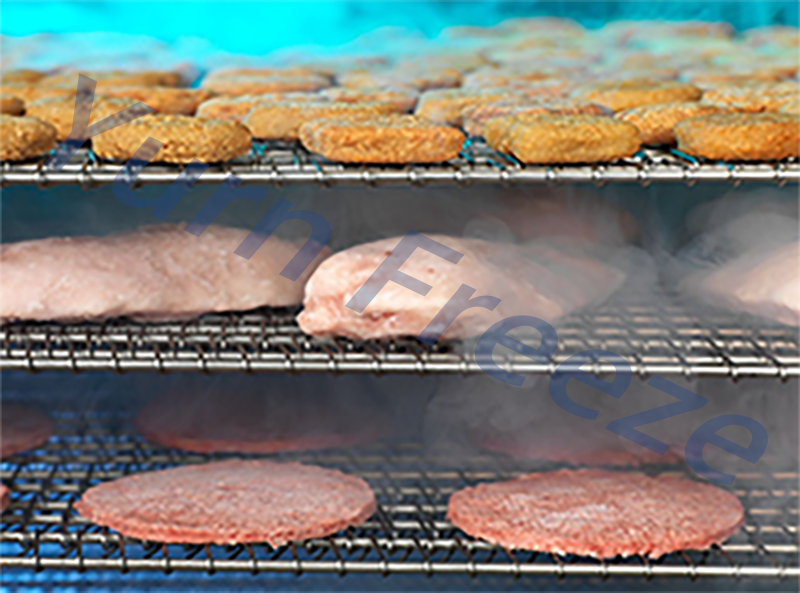In food processing, maintaining the freshness, quality, and nutritional value of food products is paramount. Spiral and blast freezer rooms are two popular methods for achieving rapid freezing. While both technologies serve the same purpose—to quickly freeze food items—they differ significantly in design, functionality, and suitability for specific applications. Let’s delve into the key distinctions between spiral freezers and blast freezer rooms.
Spiral Freezer: An Efficient Conveyor Belt System
A spiral freezer, also known as a spiral quick freezer, is a high-efficiency freezing system that utilizes a continuous conveyor belt to move food products through a chilled environment. The unique spiral design allows for maximum surface area exposure to cold air, ensuring rapid and uniform freezing. These freezers are ideal for processing large volumes of small or individually quick-frozen (IQF) products like vegetables, fruits, seafood, and prepared meals.
Manufacturers of spiral freezers, such as leading industry players, focus on optimizing the freezing process through advanced airflow technology and energy-efficient refrigeration systems. The continuous motion of the conveyor belt minimizes product handling, reducing the risk of damage and maintaining product integrity. Spiral freezers are particularly advantageous for businesses seeking high throughput with consistent freezing results.
Blast Freezer Room: A Batch Freezing Solution
On the other hand, a blast freezer room, or a blast chiller-freezer, operates on a batch-freezing principle. This type of freezer is essentially a walk-in or drive-in cold storage unit designed to rapidly chill or freeze large quantities of food items simultaneously. Blast freezer rooms are typically used for bulk food items, large cuts of meat, or entire pallets of products that need to be frozen quickly and uniformly.
The design of a blast freezer room emphasizes rapid temperature reduction, often achieving sub-zero temperatures within hours. These rooms are equipped with powerful fans and refrigerant systems that circulate cold air evenly throughout the chamber, ensuring that all food items are exposed to consistent freezing conditions. While blast freezer rooms may require more manual handling and longer cycle times compared to spiral freezers, they offer flexibility in accommodating a wider range of product sizes and shapes.
Choosing the Right Solution for Your Needs
When deciding between a spiral freezer and a blast freezer room, the key considerations include production volume, product type, space availability, and operational efficiency. Spiral freezers excel in high-volume, continuous production environments where rapid and consistent freezing is critical. They are often the preferred choice for processors of IQF products due to their ability to handle individual items gently and efficiently.
Conversely, blast freezer rooms are more suitable for businesses that require flexibility in handling varying product sizes and volumes. They are ideal for batch processing, allowing for the simultaneous freezing of diverse food items without compromising on quality. The initial investment and operational costs of both systems vary, with spiral freezers tending to offer higher throughput and lower energy consumption per unit of product frozen.
In conclusion, both spiral freezers and blast freezer rooms serve as vital components in the food freezing industry, each with its unique set of advantages tailored to specific processing needs. Understanding the differences between these two technologies will help you make an informed decision that aligns with your operational goals and product requirements. Whether you’re a spiral freezer manufacturer looking to innovate or a food processor seeking the optimal freezing solution, choosing the right technology can significantly enhance your production efficiency and product quality.
Related articles:


